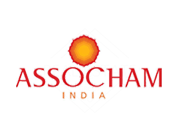Ararso, E., Ayele, G., Geremu, T., Muleta, B. and Abeba, E. (2018). On-farm demonstration and evaluation of rooftop water harvesting and low-cost drip irrigation system in moisture deficit areas of Daro Labu District, Eastern Ethiopia. J. Res. Dev. Manage. 48: 1-5.
Aron, D. (1949). Copper enzymes isolated chloroplasts, polyphenol oxidase in Beta vulgaris. Plant Physiol. 24: 1-15.
Artikova, H. T., Sattorova, M. M. and Jumaev, J. J. O. (2021). Prevent salinization and increase the fertility of irrigated sandy and loamy soils. Am. J. Agric. Biomed. Eng. 3: 1-6.
Atta, K., Mondal, S., Gorai, S., Singh, A. P., Kumari, A., Ghosh, T., Roy, A., Hembram, S., Gaikwad, D. J., Mondal, S., Bhattacharya, S., Jha, U. C. and Jespersen, D. (2023). Impacts of salinity stress on crop plants: Improving salt tolerance through genetic and molecular dissection. Front. Plant Sci. 14: 1241736. doi:10.3389/fpls.2023.1241736
Coelho, A. F. S., Gomes, É. P., Sousa, A. D. P. and Glória, M. B. A. (2005). Effect of irrigation level on yield and bioactive amine content of American lettuce. J. Sci. Food Agric. 85: 1026-32.
De Souza, T. A. F. and Freitas, H. (2018). Long-term effects of fertilization on soil organism diversity. In: Sustainable Agriculture Reviews Volume (28) Ecology for agriculture, Springer International Publishing. Pp. 211-47.
Delaide, B., Goddek, S., Gott, J., Soyeurt, H. and Jijakli, M. H. (2016). Lettuce (Lactuca sativa L. var. Sucrine) growth performance in complemented aquaponic solution outperforms hydroponics. Water 8: 467. doi:10.3390/w8100467
Dey, P., Pattanaik, D., Mohapatra, D., Saha, D., Dash, D., Mishra, A., Priyadarshinee, L., Singh, A., Swain, P., Baig, M. J. Kherawat, B. S., Chung, S. M., Kumar, M., Badu, M., Singhal, R. K., Gaikwad, D. J., Khan, N. M., Manohar, S. and Kesawat, M. S. (2024). Gasotransmitters signaling and their crosstalk with other signaling molecules under diverse stress conditions in plants. S. Afr. J. Bot. 169: 119-33. doi:10.1016/j.sajb.2024.03.041
DuPont, M. S., Mondin, Z., Williamson, G. and Price, K. R. (2000). Effect of variety, processing, and storage on the flavonoid glycoside content and composition of lettuce and endive. J. Agric. Food Chem. 48: 3957-64.
Fallovo, C., Rouphael, Y., Rea, E., Battistelli, A. and Colla, G. (2009). Nutrient solution concentration and growing season affect yield and quality of Lactuca sativa L. var. acephala in floating raft culture. J. Sci. Food Agric. 89: 1682-89.
Gaikwad, D. J., Kalasare, R. S., Jaswanth, D. S., Sravani, P. S. and Pramanic, S. (2022a). Morpho-Physiological responses associated with hydroponically grown maize fodder. Indian J. Nat. Sci. 13: 43228-32.
Gaikwad, D. J., Sahu, C., Prasanth, S., Divya, B., Atta, K., Jaswanth, D. S. and Mahapatra, A. (2023). Hydroponics vs Soil: An in-depth assessment of morpho-physiological traits in spinach (Spinacia oleracea). Agric. Sci. Dig. 1: 6.
Gaikwad, D. J., Ubale, N. B., Pal, A., Singh, S., Ali, M. A. and Maitra, S. (2022b). Abiotic stresses impact on major cereals and adaptation options-A review. Res. Crop. 23: 896-915.
Gaikwad, D. J. and Maitra, S. (2020). Hydroponics cultivation of crops. In: Protected cultivation and smart agriculture (Eds. Maitra, S., Gaikwad, D.J. and Shankar, T). Pp. 279- 87.
Gaikwad, D. J., Pal, A. and Mondal, S. (2020a) Effect of arsenic toxicity on chlorophyll content and antioxidative enzymes activities in rice seedlings. Int. J. Environ. Clim. Change. 10: 411-21.
Gaikwad, D. J., Priyadarsini, S. and Mallick, B. (2020b). Effects of different hydroponics systems and growing media on physiological parameters of spinach. Int. J. Curr. Microbiol. Appl. Sci. 9:1409-14.
George, P. and George, N. (2016). Hydroponics (soilless cultivation of plants) for biodiversity conservation. Int. J. Mod. Trends Eng. Sci. 3: 97-104.
Kenny, O. and O’Beirne, D. (2009). The effects of washing treatment on antioxidant retention in ready‐to‐use iceberg lettuce. Int. J. Food Sci. Technol. 44: 1146-56.
Kim, M. J., Moon, Y., Tou, J. C., Mou, B. and Waterland, N. L. (2016). Nutritional value, bioactive compounds and health benefits of lettuce (Lactuca sativa L.). J. Food Compos. Anal. 49: 19-34.
Lages Barbosa, G., Almeida Gadelha, F. D., Kublik, N., Proctor, A., Reichelm, L. and Weissinger, E. (2015). Comparison of land, water, and energy requirements of lettuce grown using hydroponic vs. conventional agricultural methods. Int. J. Environ. Res. Public Health. 12: 6879-91.
Maboko, M. M. and Du Plooy, C. P. (2009). Effect of plant spacing on growth and yield of lettuce (Lactuca sativa L.) in a soilless production system. S. Afr. J. Plant Soil. 26: 195-98.
Maitra, S., Sahoo, U., Sairam, M., Gitari, H. I., Rezaei-Chiyaneh, E., Battaglia, M. L. and Hossain, A. (2023). Cultivating sustainability: A comprehensive review on intercropping in a changing climate. Res. Crop. 24: 702–15.
Manepalli, S. B., Tomar, S., Gaikwad, D. J. and Maitra, S. (2022). Abiotic stress signaling in plants and transgenic technology as a triumph: A review. J. Appl. Biol. Biotechnol. 10: 5-13.
McNabb, D. E. (2019). Global pathways to water sustainability. Palgrave Macmillan Cham, Pp. 344. doi:10.1007/978-3-030-04085-7
Nungula, E. Z., Raza, M. A., Nasar, J., Maitra, S., Seleiman, M. F., Ranjan, S., Padhan, S. R., Sow, S., Gaikwad, D. J. and Gitari, H. H. (2024). Cadmium in soil and plants: a review. In: Cadmium Toxicity in Water: Challenges and Solutions, Springer Nature Switzerland. Pp. 21-43.
Pramanick, B., Kumar, M., Naik, B. M., Kumar, M., Singh, S. K., Maitra, S., Naik, B. S. S. S., Rajput, V. D. and Minkina, T. (2022). Long-term conservation tillage and precision nutrient management in maize–wheat cropping system, effect on soil properties, crop production, and economics. Agronomy 12: 2766. doi:10.3390/agronomy12112766
Purba, J. H., Parmila, I. P. and Dadi, W. (2021). Effect of soilless media (hydroponic) on growth and yield of two varieties of lettuce. Agril. Sci. 4: 154-65.
Sagar, L., Singh, S., Sharma, A., Maitra, S., Attri, M., Sahoo, R. K., Ghasil, B. P., Shankar, T., Gaikwad, D. J., Sairam, M. and Sahoo, U. (2023). Role of soil microbes against abiotic stresses induced oxidative stresses in plants. In: Microbial Symbionts and Plant Health: Trends and Applications for Changing Climate, Springer Nature Singapore. Pp. 149-77.
Sahoo, U., Gaikwad, D. J., Banerjee, M., Malik, G. C. and Maitra, S. (2023). Artificial media for soilless cultivation. In: Advances in Agricultural Technology, Maitra, S., Gaikwad, D.J. and Santosh, D.T. (Eds.), Griffon, Canada, Pp. 29 ̶ 45.
Sairam, M., Maitra, S., Sain, S., Gaikwad, D. J. and Sagar, L. (2024). Dry matter accumulation and physiological growth parameters of maize as influenced by different nutrient management practices. Agric. Sci. Dig. 44: 219-25.
Sambo, P., Nicoletto, C., Giro, A., Pii, Y., Valentinuzzi, F., Mimmo, T., Lugli, P., Orzes, G., Mazzetto, F., Astolfi, F., Terzano, R. and Cesco, S. (2019). Hydroponic solutions for soilless production systems: issues and opportunities in a smart agriculture perspective. Front. Plant Sci. 10: 923. doi:10.3389/fpls.2019.00923
Santosh, D. T. and Gaikwad, D. J. (2022). Advances in Hydroponic Systems: Types and Management. Advances in Agricultural Technology, (Eds. Maitra, S. Gaikwad, D. J. and Santosh, D.T.) Griffon, Canada, pp: 16-28.
Santosh, D. T., Debnath, S., Maitra, S., Sairam, M., Sagar, L. L., Hossain, A. and Moulick, D. (2024). Alleviation of climate catastrophe in agriculture through adoption of climate-smart technologies. In: Climate Crisis: Adaptive Approaches and Sustainability. (Eds. Chatterjee, U., Shaw, R., Kumar, S., Raj, A.D. and Sandipan Das, S.) Springer Nature Switzerland. Pp: 307-32.
Scanlon, B. R., Rateb, A., Pool, D. R., Sanford, W., Save, H., Sun, A., Long, D. and Fuchs, B. (2021). Effects of climate and irrigation on GRACE-based estimates of water storage changes in major US aquifers. Environ. Res. Lett. 16: 094009. doi:10.1088/1748-9326/ac16ff
Sharma, N., Acharya, S., Kumar, K., Singh, N. and Chaurasia, O. P. (2018). Hydroponics as an advanced technique for vegetable production: An overview. J. Soil Water Conserv. 17: 364-71.
Singh, A., Pandey, H., Pal, A., Chauhan, D., Pandey, S., Gaikwad, D. J., Sahu, C. and Kousik Atta, K. (2023). Linking the role of melatonin in plant stress acclimatization. S. Afr. J. Bot. 159: 179-90.
Stringer, L. C., Mirzabaev, A., Benjaminsen, T. A., Harris, R. M., Jafari, M., Lissner, T. K., Stevens, N. and Tirado-von der Pahlen, C. (2021). Climate change impacts on water security in global drylands. One Earth 4: 851-64.
Szeto, Y. T., Kwok, T. C. and Benzie, I. F. (2004). Effects of a long-term vegetarian diet on biomarkers of antioxidant status and cardiovascular disease risk. Nutrition 20: 863-66.
Tomar, S., Babu, M. S., Gaikwad, D. J. and Maitra, S. (2021). A Review on molecular mechanisms of wheat (Triticum aestivum L.) and rice (Oryza sativa L.) under abiotic stresses with special reference to drought and heat. Int. J. Agric. Environ. Biotechnol. 14: 215-22.
Treftz, C. and Omaye, S. T. (2016). Hydroponics: Potential for augmenting sustainable food production in non-arable regions. Nutr. Food Sci. 46: 672-84.
Xiao, Z., Lester, G. E., Luo, Y. and Wang, Q. (2012). Assessment of vitamin and carotenoid concentrations of emerging food products: edible microgreens. J. Agril. Food Chem. 60: 7644-51.
Yuvaraj, M. and Subramanian, K. S. (2020). Different types of hydroponics system. Biot. Res. Today. 2: 835-37.
Aron, D. (1949). Copper enzymes isolated chloroplasts, polyphenol oxidase in Beta vulgaris. Plant Physiol. 24: 1-15.
Artikova, H. T., Sattorova, M. M. and Jumaev, J. J. O. (2021). Prevent salinization and increase the fertility of irrigated sandy and loamy soils. Am. J. Agric. Biomed. Eng. 3: 1-6.
Atta, K., Mondal, S., Gorai, S., Singh, A. P., Kumari, A., Ghosh, T., Roy, A., Hembram, S., Gaikwad, D. J., Mondal, S., Bhattacharya, S., Jha, U. C. and Jespersen, D. (2023). Impacts of salinity stress on crop plants: Improving salt tolerance through genetic and molecular dissection. Front. Plant Sci. 14: 1241736. doi:10.3389/fpls.2023.1241736
Coelho, A. F. S., Gomes, É. P., Sousa, A. D. P. and Glória, M. B. A. (2005). Effect of irrigation level on yield and bioactive amine content of American lettuce. J. Sci. Food Agric. 85: 1026-32.
De Souza, T. A. F. and Freitas, H. (2018). Long-term effects of fertilization on soil organism diversity. In: Sustainable Agriculture Reviews Volume (28) Ecology for agriculture, Springer International Publishing. Pp. 211-47.
Delaide, B., Goddek, S., Gott, J., Soyeurt, H. and Jijakli, M. H. (2016). Lettuce (Lactuca sativa L. var. Sucrine) growth performance in complemented aquaponic solution outperforms hydroponics. Water 8: 467. doi:10.3390/w8100467
Dey, P., Pattanaik, D., Mohapatra, D., Saha, D., Dash, D., Mishra, A., Priyadarshinee, L., Singh, A., Swain, P., Baig, M. J. Kherawat, B. S., Chung, S. M., Kumar, M., Badu, M., Singhal, R. K., Gaikwad, D. J., Khan, N. M., Manohar, S. and Kesawat, M. S. (2024). Gasotransmitters signaling and their crosstalk with other signaling molecules under diverse stress conditions in plants. S. Afr. J. Bot. 169: 119-33. doi:10.1016/j.sajb.2024.03.041
DuPont, M. S., Mondin, Z., Williamson, G. and Price, K. R. (2000). Effect of variety, processing, and storage on the flavonoid glycoside content and composition of lettuce and endive. J. Agric. Food Chem. 48: 3957-64.
Fallovo, C., Rouphael, Y., Rea, E., Battistelli, A. and Colla, G. (2009). Nutrient solution concentration and growing season affect yield and quality of Lactuca sativa L. var. acephala in floating raft culture. J. Sci. Food Agric. 89: 1682-89.
Gaikwad, D. J., Kalasare, R. S., Jaswanth, D. S., Sravani, P. S. and Pramanic, S. (2022a). Morpho-Physiological responses associated with hydroponically grown maize fodder. Indian J. Nat. Sci. 13: 43228-32.
Gaikwad, D. J., Sahu, C., Prasanth, S., Divya, B., Atta, K., Jaswanth, D. S. and Mahapatra, A. (2023). Hydroponics vs Soil: An in-depth assessment of morpho-physiological traits in spinach (Spinacia oleracea). Agric. Sci. Dig. 1: 6.
Gaikwad, D. J., Ubale, N. B., Pal, A., Singh, S., Ali, M. A. and Maitra, S. (2022b). Abiotic stresses impact on major cereals and adaptation options-A review. Res. Crop. 23: 896-915.
Gaikwad, D. J. and Maitra, S. (2020). Hydroponics cultivation of crops. In: Protected cultivation and smart agriculture (Eds. Maitra, S., Gaikwad, D.J. and Shankar, T). Pp. 279- 87.
Gaikwad, D. J., Pal, A. and Mondal, S. (2020a) Effect of arsenic toxicity on chlorophyll content and antioxidative enzymes activities in rice seedlings. Int. J. Environ. Clim. Change. 10: 411-21.
Gaikwad, D. J., Priyadarsini, S. and Mallick, B. (2020b). Effects of different hydroponics systems and growing media on physiological parameters of spinach. Int. J. Curr. Microbiol. Appl. Sci. 9:1409-14.
George, P. and George, N. (2016). Hydroponics (soilless cultivation of plants) for biodiversity conservation. Int. J. Mod. Trends Eng. Sci. 3: 97-104.
Kenny, O. and O’Beirne, D. (2009). The effects of washing treatment on antioxidant retention in ready‐to‐use iceberg lettuce. Int. J. Food Sci. Technol. 44: 1146-56.
Kim, M. J., Moon, Y., Tou, J. C., Mou, B. and Waterland, N. L. (2016). Nutritional value, bioactive compounds and health benefits of lettuce (Lactuca sativa L.). J. Food Compos. Anal. 49: 19-34.
Lages Barbosa, G., Almeida Gadelha, F. D., Kublik, N., Proctor, A., Reichelm, L. and Weissinger, E. (2015). Comparison of land, water, and energy requirements of lettuce grown using hydroponic vs. conventional agricultural methods. Int. J. Environ. Res. Public Health. 12: 6879-91.
Maboko, M. M. and Du Plooy, C. P. (2009). Effect of plant spacing on growth and yield of lettuce (Lactuca sativa L.) in a soilless production system. S. Afr. J. Plant Soil. 26: 195-98.
Maitra, S., Sahoo, U., Sairam, M., Gitari, H. I., Rezaei-Chiyaneh, E., Battaglia, M. L. and Hossain, A. (2023). Cultivating sustainability: A comprehensive review on intercropping in a changing climate. Res. Crop. 24: 702–15.
Manepalli, S. B., Tomar, S., Gaikwad, D. J. and Maitra, S. (2022). Abiotic stress signaling in plants and transgenic technology as a triumph: A review. J. Appl. Biol. Biotechnol. 10: 5-13.
McNabb, D. E. (2019). Global pathways to water sustainability. Palgrave Macmillan Cham, Pp. 344. doi:10.1007/978-3-030-04085-7
Nungula, E. Z., Raza, M. A., Nasar, J., Maitra, S., Seleiman, M. F., Ranjan, S., Padhan, S. R., Sow, S., Gaikwad, D. J. and Gitari, H. H. (2024). Cadmium in soil and plants: a review. In: Cadmium Toxicity in Water: Challenges and Solutions, Springer Nature Switzerland. Pp. 21-43.
Pramanick, B., Kumar, M., Naik, B. M., Kumar, M., Singh, S. K., Maitra, S., Naik, B. S. S. S., Rajput, V. D. and Minkina, T. (2022). Long-term conservation tillage and precision nutrient management in maize–wheat cropping system, effect on soil properties, crop production, and economics. Agronomy 12: 2766. doi:10.3390/agronomy12112766
Purba, J. H., Parmila, I. P. and Dadi, W. (2021). Effect of soilless media (hydroponic) on growth and yield of two varieties of lettuce. Agril. Sci. 4: 154-65.
Sagar, L., Singh, S., Sharma, A., Maitra, S., Attri, M., Sahoo, R. K., Ghasil, B. P., Shankar, T., Gaikwad, D. J., Sairam, M. and Sahoo, U. (2023). Role of soil microbes against abiotic stresses induced oxidative stresses in plants. In: Microbial Symbionts and Plant Health: Trends and Applications for Changing Climate, Springer Nature Singapore. Pp. 149-77.
Sahoo, U., Gaikwad, D. J., Banerjee, M., Malik, G. C. and Maitra, S. (2023). Artificial media for soilless cultivation. In: Advances in Agricultural Technology, Maitra, S., Gaikwad, D.J. and Santosh, D.T. (Eds.), Griffon, Canada, Pp. 29 ̶ 45.
Sairam, M., Maitra, S., Sain, S., Gaikwad, D. J. and Sagar, L. (2024). Dry matter accumulation and physiological growth parameters of maize as influenced by different nutrient management practices. Agric. Sci. Dig. 44: 219-25.
Sambo, P., Nicoletto, C., Giro, A., Pii, Y., Valentinuzzi, F., Mimmo, T., Lugli, P., Orzes, G., Mazzetto, F., Astolfi, F., Terzano, R. and Cesco, S. (2019). Hydroponic solutions for soilless production systems: issues and opportunities in a smart agriculture perspective. Front. Plant Sci. 10: 923. doi:10.3389/fpls.2019.00923
Santosh, D. T. and Gaikwad, D. J. (2022). Advances in Hydroponic Systems: Types and Management. Advances in Agricultural Technology, (Eds. Maitra, S. Gaikwad, D. J. and Santosh, D.T.) Griffon, Canada, pp: 16-28.
Santosh, D. T., Debnath, S., Maitra, S., Sairam, M., Sagar, L. L., Hossain, A. and Moulick, D. (2024). Alleviation of climate catastrophe in agriculture through adoption of climate-smart technologies. In: Climate Crisis: Adaptive Approaches and Sustainability. (Eds. Chatterjee, U., Shaw, R., Kumar, S., Raj, A.D. and Sandipan Das, S.) Springer Nature Switzerland. Pp: 307-32.
Scanlon, B. R., Rateb, A., Pool, D. R., Sanford, W., Save, H., Sun, A., Long, D. and Fuchs, B. (2021). Effects of climate and irrigation on GRACE-based estimates of water storage changes in major US aquifers. Environ. Res. Lett. 16: 094009. doi:10.1088/1748-9326/ac16ff
Sharma, N., Acharya, S., Kumar, K., Singh, N. and Chaurasia, O. P. (2018). Hydroponics as an advanced technique for vegetable production: An overview. J. Soil Water Conserv. 17: 364-71.
Singh, A., Pandey, H., Pal, A., Chauhan, D., Pandey, S., Gaikwad, D. J., Sahu, C. and Kousik Atta, K. (2023). Linking the role of melatonin in plant stress acclimatization. S. Afr. J. Bot. 159: 179-90.
Stringer, L. C., Mirzabaev, A., Benjaminsen, T. A., Harris, R. M., Jafari, M., Lissner, T. K., Stevens, N. and Tirado-von der Pahlen, C. (2021). Climate change impacts on water security in global drylands. One Earth 4: 851-64.
Szeto, Y. T., Kwok, T. C. and Benzie, I. F. (2004). Effects of a long-term vegetarian diet on biomarkers of antioxidant status and cardiovascular disease risk. Nutrition 20: 863-66.
Tomar, S., Babu, M. S., Gaikwad, D. J. and Maitra, S. (2021). A Review on molecular mechanisms of wheat (Triticum aestivum L.) and rice (Oryza sativa L.) under abiotic stresses with special reference to drought and heat. Int. J. Agric. Environ. Biotechnol. 14: 215-22.
Treftz, C. and Omaye, S. T. (2016). Hydroponics: Potential for augmenting sustainable food production in non-arable regions. Nutr. Food Sci. 46: 672-84.
Xiao, Z., Lester, G. E., Luo, Y. and Wang, Q. (2012). Assessment of vitamin and carotenoid concentrations of emerging food products: edible microgreens. J. Agril. Food Chem. 60: 7644-51.
Yuvaraj, M. and Subramanian, K. S. (2020). Different types of hydroponics system. Biot. Res. Today. 2: 835-37.










